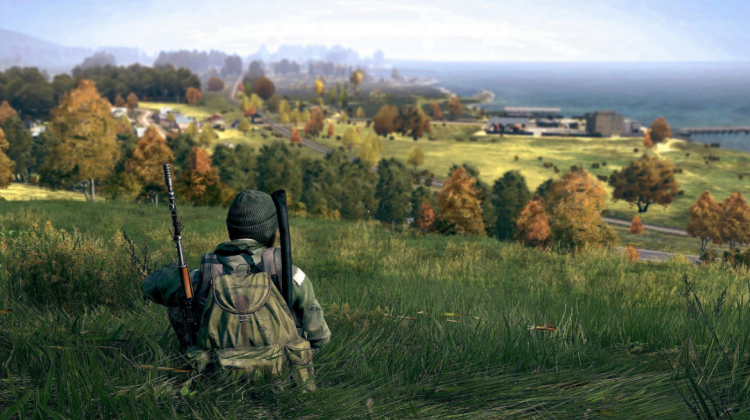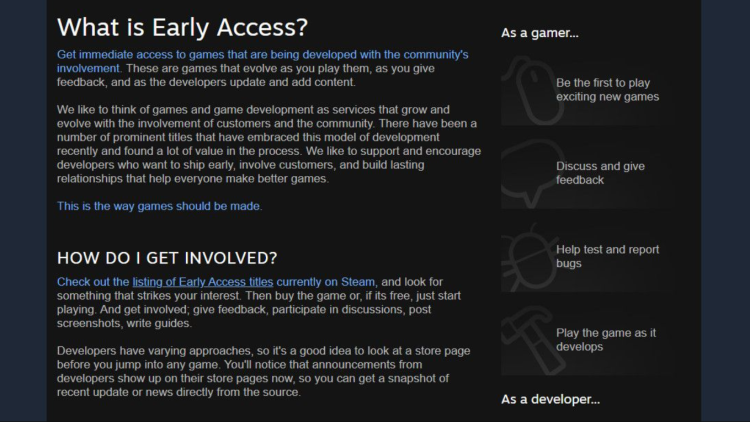Steam Early Access er ikke hva det pleide å være – hvorfor det kan bli slutt på spillet
Steam’s Early Access started in 2013 as a way to let indie developers release in-progress games to fund development and get feedback. Early successes like Kerbal Space Program, ARMA 3, and Prison Architect validated the model. But twelve years later, Early Access feels broken.
A recent WindowsCentral feature examines the shift from promise to problems in this once-hopeful system. Back in the early days, titles like Kerbal Space Program and ARK: Survival Evolved used Early Access well. They launched small, collected player feedback over months or years, iterated and improved, and eventually reached full release with positive reviews. Players trusted the system because developers followed through.
That trust is harder to find now. Early Access now includes over 14,000 titles, many left incomplete, abandoned, or never updated. That flood of “abandonware” is eroding trust: players buy in with hope for potential, only to be left with broken games or empty promises.
The original intentions have been warped. Early Access rules require honesty, no overcharging, and clear declarations of the game’s state. But they don’t require developers to finish or respond to feedback. Developers can release unfinished games, collect money, and disappear. Steam doesn’t enforce follow-through.

WindowsCentral points out that Steam’s filter system now bundles unreleased, feature-poor titles with the few quality games still in development. It scratches the itch for new games, but it also entices impulse purchases of undercooked projects, often touted by streamers or hype.
There have been high-profile failures. DayZ spent five years in Early Access before dropping development almost entirely. It still sells, yet it never reached the state fans expected. Other projects, like Earth: Year 2066, were pulled from the platform after being ruled incomplete or fraudulent, still a rarity. Many more remain, quietly broken and untouched.
Studies show that about 50% of Early Access games never reach full release. Even big studios can go dark—Double Fine’s Spacebase DF-9 exited Early Access with far fewer features than promised, leaving players disappointed.
Developers argue that multiple issues cause the decline. Some blame a lack of maturity in buyers, who expect near-finished games despite Early Access labels. Others blame unclear project plans and absent communication. Many teams launching Early Access versions had no plan or lacked the resources to finish.
PCGamesN coverage echoes that sentiment: developers must manage expectations, deliver consistent updates, and never neglect the players. Games that succeed in Early Access—like Deep Rock Galactic and Subnautica—did so by publishing roadmaps, responding to input, and keeping a steady update pace.
Early Access now offers more data: developers who succeed often use analytics, telemetry, and build community trust. But statistics show just 62% of new Steam releases still use Early Access, and failure rates remain at 31–50% depending on the dataset. Too many titles stall halfway, damaging both studio credibility and player trust.

The result is a system where diamonds are buried in a mountain of rough stones. Quality projects still emerge, but finding them takes effort. Meanwhile, abandoned titles chip away at gamers' wallets and faith.
Steam’s Early Access isn’t dead. It still lets worthy games develop with player guidance, and some studios have turned it into a sustainable model. But its golden days—when every Early Access project felt like potential—are gone.
Gamers now need to vet Early Access titles more carefully. Developers need to treat the platform seriously—provide timelines, interact with their audience, and honor promises.
This is not a full failure, but something needs to change. Steam must enforce clearer standards for transparency and completion. Otherwise, Early Access risks becoming a cautionary tale for crowdfunding and pre-release hopes.

Kommentarer